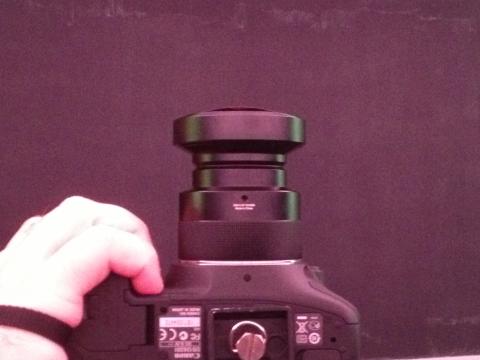Science on the Half Sphere

A side view of the lense.
Recently, Science on the Half Sphere, a planetarium media initiative in collaboration with CosmoQuest, has released a series of fisheye images and video to be used in full dome productions. This collaboration of efforts from the staff, faculty, and students at the YSU Ward Beecher Planetarium will bring free, full dome media to other facilities that have the ability to project fisheye images. The initial product, called Cosmic Castaways, was a 22-minute production featured at the Ward Beecher Planetarium with the help of a grant awarded to Dr. Feldmeier from the National Science Foundation in 2008. Cosmic Castaways is currently available to view on media such as YouTube thanks to planetarium engineer Curt Spivey and Dr. Pamela Gay. Science on the Half Sphere was started by the department and then last May when Dr. Patrick Durrell went to the Hawaiian volcano of Mauna Kea. Mauna Kea is the highest point in the state of Hawaii and will soon be the location for a new telescope, the Thirty Meter Telescope. The corporation that owns Thirty Meter Telescope was granted permission to build the largest telescope in the world in April 2013. The Mauna Kea Observatory is a prime location for astronomical research. It holds some of the largest telescopes in the world, including the Gemini North Telescope. These telescopes are multi-national facilities that allow astronomers from all over the world to come and research different aspects of the universe.
The fisheye images allow a planetarium to extend the experience of being in one of these top-rated facilities without having to travel to Hawaii. Many of the images that Dr. Durrell took show the expanse of the telescope and make the viewer feel like they are standing in the facility. The images are taken with a fisheye lens, which as the name implies, looks like a fish’s eye and similar in shape to the dome that the pictures are manipulated to fit.
Dr. Patrick Durrell and Dr. John Feldmeier, both from YSU, have taken on these projects with the help of the two National Science Foundation grants, the second of which was awarded in 2009 to Dr. Durrell. Part of the NSF grants requires that some of the grant be used for community engagement. The other part of the grant is used for Dr. Durrell’s and Dr. Feldmeier’s research. “Astronomy is a gateway to STEM,” Dr. Durrell said. “We aren’t training [the community] to be astronomers, but to have more of an appreciation for science.” There is currently a need for free planetarium media because many shows can cost upward of $8000, especially those narrated by famous voices. There are many media providers that charge for their productions, but only a few who do not. Because they know how difficult it is, the Ward Beecher Planetarium, the staff, and they faculty pride themselves on keeping the planetarium free for the community, as well as providing the free planetarium media. To see the full set of full-dome, fisheye images, click here. To see the full set of full-dome, fisheye time-lapse video images, click here. To learn more, please visit the CosmoQuest Blog: Science on the Half Sphere.